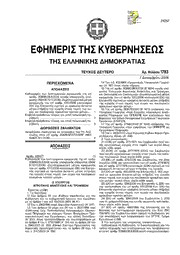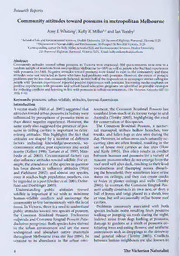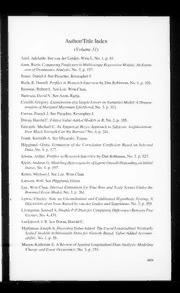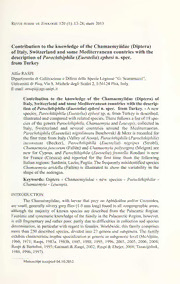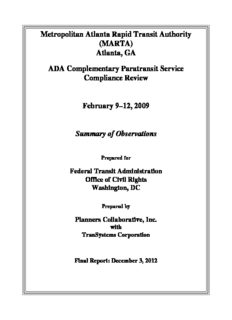
Metropolitan Atlanta Rapid Transit Authority ADA Complementary Paratransit Service Compliance ... PDF
Preview Metropolitan Atlanta Rapid Transit Authority ADA Complementary Paratransit Service Compliance ...
Metropolitan Atlanta Rapid Transit Authority (MARTA) Atlanta, GA ADA Complementary Paratransit Service Compliance Review February 9–12, 2009 Summary of Observations Prepared for Federal Transit Administration Office of Civil Rights Washington, DC Prepared by Planners Collaborative, Inc. with TranSystems Corporation Final Report: December 3, 2012 MARTA – ADA Complementary Paratransit Service Review Final Report CONTENTS 1 Purpose of the Review .......................................................................................................... 4 2 Overview ................................................................................................................................ 6 2.1 Pre-Review ..................................................................................................................... 6 2.2 On-Site Review .............................................................................................................. 7 3 Background ......................................................................................................................... 10 3.1 Prior FTA Review ........................................................................................................ 10 3.2 Description of ADA Complementary Paratransit Service ........................................... 11 3.3 ADA Complementary Paratransit Performance Policies and Standards ...................... 12 3.4 Customer Comments .................................................................................................... 14 4 Summary of Findings ......................................................................................................... 17 4.1 ADA Complementary Paratransit Service Criteria and Complaint Handling Process 17 4.2 ADA Complementary Paratransit Eligibility ............................................................... 18 4.3 Telephone Access ......................................................................................................... 21 4.4 Trip Reservations and Scheduling ................................................................................ 22 4.5 Service Performance ..................................................................................................... 23 4.6 Resources ...................................................................................................................... 26 5 ADA Complementary Paratransit Service Criteria ........................................................ 27 5.1 Customer Comments .................................................................................................... 27 5.2 Type of Service ............................................................................................................ 27 5.3 Service Area, Days and Hours of Service .................................................................... 28 5.4 Fares ............................................................................................................................. 30 5.5 Trip Purposes ................................................................................................................ 30 5.6 Response Time ............................................................................................................. 30 5.7 Coordination with Adjoining Service Providers .......................................................... 31 5.8 MARTA Complaint Handling Process ......................................................................... 32 5.9 Findings ........................................................................................................................ 33 5.10 Recommendations ........................................................................................................ 34 6 ADA Complementary Paratransit Eligibility ................................................................... 35 6.1 Customer Comments .................................................................................................... 35 6.2 Eligibility Determination Procedures and Practices ..................................................... 35 6.3 Observations ................................................................................................................. 44 6.4 Findings ........................................................................................................................ 47 6.5 Recommendations ........................................................................................................ 51 7 Telephone Access ................................................................................................................ 51 7.1 Customer Comments .................................................................................................... 52 7.2 Phone Service Standards .............................................................................................. 53 7.3 Phone System Design and Staffing .............................................................................. 53 7.4 Telephone Performance ................................................................................................ 56 MARTA – ADA Complementary Paratransit Service Review Final Report 7.5 Findings ........................................................................................................................ 64 7.6 Recommendations ........................................................................................................ 64 8 Trip Reservations Process .................................................................................................. 66 8.1 Customer Comments .................................................................................................... 66 8.2 Policies and Procedures ................................................................................................ 67 8.3 Review of Recorded Trip Denials ................................................................................ 70 8.4 Observations of the Handling of Trip Requests ........................................................... 70 8.5 Findings ........................................................................................................................ 72 8.6 Recommendations ........................................................................................................ 73 9 Service Performance ........................................................................................................... 75 9.1 Customer Comments .................................................................................................... 75 9.2 Service Standards and Policies ..................................................................................... 76 9.3 Daily Operations ........................................................................................................... 78 9.4 Driver Interviews .......................................................................................................... 80 9.5 On-Time Performance .................................................................................................. 82 9.6 Review of Trip Coding ................................................................................................. 84 9.7 Analysis of On-Board Travel Times ............................................................................ 85 9.8 Findings ........................................................................................................................ 96 9.9 Recommendations ........................................................................................................ 99 10 Resources ........................................................................................................................... 101 10.1 Customer Comments .................................................................................................. 101 10.2 Driver Comments ....................................................................................................... 101 10.3 Vehicle Fleet and Vehicle Availability ...................................................................... 102 10.4 Run Coverage and Extraboard/Standby Drivers ........................................................ 103 10.5 Driver Training and Turnover .................................................................................... 104 10.6 Other Staffing ............................................................................................................. 105 10.7 Planning, Budgeting, and Funding ............................................................................. 105 10.8 Ridership .................................................................................................................... 107 10.9 Findings ...................................................................................................................... 108 10.10 Recommendations ...................................................................................................... 108 Attachment A MARTA’s Response to Report Attachment B On-Site Review Schedule Attachment C MARTA’s ADA Paratransit Eligibility Application Materials Attachment D Sample Conditional Eligibility Letter Attachment E Reported Trip Denials, FY 2007, 2008, and 2009 Attachment F Driver Interview Form Attachment G MARTA’s “Paratransit Daily Operator Complement” Data, January 24-30, 2009 Attachment H Ridership, Vehicle-Hours, and Workforce Information Used in FY 2009 Budget Process Attachment I TCRP Model Estimate of ADA Paratransit Demand Estimation for the MARTA Area 1 Purpose of the Review Public entities that operate fixed route transportation services for the general public are required by the U.S. Department of Transportation (DOT) regulations implementing the Americans with Disabilities Act of 1990 (ADA) to provide ADA complementary paratransit service for persons who, because of their disability, are unable to use the fixed route system. These regulations (49 CFR Parts 27, 37, and 38) include six service criteria that must be met by ADA complementary paratransit service programs. Section 37.135(d) of the regulations requires that ADA complementary paratransit services meet these criteria by January 26, 1997. The Federal Transit Administration (FTA) is responsible for ensuring compliance with the ADA and the DOT regulations implementing the ADA. As part of its oversight efforts, FTA, through its Office of Civil Rights, conducts periodic reviews of fixed route transit and ADA complementary paratransit services operated by Federal grantees. The purpose of these reviews is to assist the transit agency and FTA in determining whether capacity constraints exist in ADA complementary paratransit services. The reviews examine policies and standards related to service capacity constraints such as those measured by on-time performance, on-board travel time, telephone hold times, trip denials, and any other trip-limiting factors. The reviews consider whether there are patterns or practices of a substantial number of trip limits, trip denials, early or late pickups or arrivals after desired arrival or appointment times, long trips, or long telephone hold times, as defined by the transit system’s established standards or typical practices if standards do not exist. The examination of patterns or practices includes looking at service statistics and basic service records and operating documents, and observing aspects of service delivery and operations including dispatch, reservations and scheduling to determine whether records and documents appear to reflect true levels of service delivery. Comments are solicited from local disability organizations and customers. Technical assistance is provided to assist the transit agency in monitoring service for capacity constraints. FTA conducted a review of ADA complementary paratransit service provided by the Metropolitan Atlanta Rapid Transit Authority (MARTA) of Atlanta, Georgia, known locally as MARTA Mobility, from February 9 to 12, 2009. Planners Collaborative, Inc., and TranSystems Corp., both located in Boston, Massachusetts, conducted the review for the FTA Office of Civil Rights. The review focused primarily on compliance of MARTA’s ADA complementary paratransit service with the requirement in the DOT ADA regulations that this service be operated without capacity constraints (49 CFR §37.131(f)). Sections 37.123 through 37.127 of the DOT ADA regulations require that a process be established for determining who is ADA paratransit eligible and that eligibility determinations are made consistent with regulatory criteria. Section 37.129(a) requires that ADA complementary paratransit be origin-to-destination service. Section 37.131(a) requires that ADA complementary paratransit service be provided between origins and destinations within 3/4 of a mile of fixed bus routes and between points within a 3/4-mile radius of two different rail stations. Section 37.131(b) requires that next-day service be provided. Section 37.131(c) limits ADA complementary paratransit fares to no more than twice the full fixed route fare for a comparable trip. Section 37.131(d) requires that ADA complementary paratransit service be provided Page 4 without restrictions or priorities based on trip purpose. Section 37.131(e) requires that ADA complementary paratransit service be provided during all days and hours that fixed route service is provided. Section 37.139(g) requires that complementary paratransit plans address efforts to coordinate with other public entities that have contiguous or overlapping ADA complementary paratransit service areas. The review also examined MARTA’s ADA complementary paratransit service with respect to the requirements related to eligibility determinations, rider assistance policies, and ADA complementary paratransit service criteria. This report summarizes the observations and findings of the on-site review of MARTA’s ADA complementary paratransit service. Chapter 2 explains the approach and methodology used to conduct the review. Chapter 3 then describes key features of transit services provided by MARTA’s fixed route bus and ADA complementary paratransit service. Chapter 4 p summarizes the findings that are also presented at the end of the remaining chapters. Chapter 5 includes observations and findings related to rider assistance policies, service area, fares, trip purposes, days and hours of service, and coordination with other public transit entities. Observations and findings related to the eligibility determination process are presented in Chapter 6. Observations and findings related to the capacity constraint prohibition, as well as additional observations on response time, are then presented in Chapters 7-10 on telephone service, reservations, service performance and resources. Recommendations for addressing some of the findings are also provided. On October 31, 2012, FTA transmitted the draft report to MARTA electronically for review and response within ten days. FTA did not receive a response from MARTA. Page 5 2 Overview This review focused primarily on compliance with the DOT ADA requirement that ADA complementary paratransit be operated without capacity constraints. The regulations identify several possible types of capacity constraints. These include waiting lists for trips, limits on the number of trips provided, and patterns or practices that result in a significant number of trip denials, missed trips, untimely pickups, or excessively long trips. Capacity constraints also include any operating policies or practices significantly limit the amount of service to persons who are eligible for ADA complementary paratransit. To assess each of these potential types of capacity constraints, the review focused on observations and findings regarding: • Trip denials and wait-listing of trips • Trip caps • On-time performance • Travel times This review also includes observations and findings related to five other sets of policies and practices that could affect access to ADA complementary paratransit service: • Rider assistance policies • Service area, response time, fares, trip purposes, and service times • Efforts to coordinate with other ADA complementary paratransit services in the area • ADA complementary paratransit service eligibility process • Telephone capacity The review also addresses scheduling, dispatching, operation of service and an analysis of resources as a potential contributor to capacity constraints. . 2.1 Pre-Review The FTA Office of Civil Rights sent a notification letter to MARTA on January 2, 2009 confirming dates for the review and requesting that information needed by the review team be sent in advance of the review. The notification letter is provided in Attachment B. This information included: • A description of how MARTA’s ADA complementary paratransit service is structured • Public information describing MARTA’s ADA complementary paratransit service • MARTA’s standards for on-time performance, trip denials, travel times, and telephone service MARTA made additional information available during the on-site visit. This information included: • Copies of completed driver manifests • Six months of service data, including the number of trips requested, scheduled, denied, canceled, no-shows, missed trips, and trips provided Page 6 • A breakdown of trips requested, scheduled, and provided • Detailed information about trips denied in the last six months, including origin and destination information, day and time information, and customer information • Detailed information about trips identified in the last six months with excessively long travel times • Telephone call management records • Records of customer comments and complaints related to capacity issues: trip denials, on-time performance, travel time, and telephone access In addition to reviewing the above service data and information, the review team reviewed complaints forwarded to the FTA’s Office of Civil Rights alleging violations of ADA requirements by MARTA in the provision of ADA complementary paratransit service. Finally, the review team contacted several riders, disability advocates, and disability agency staff to get comments on their experiences with MARTA’s ADA paratransit service. 2.2 On-Site Review An on-site review of the ADA complementary paratransit service took place from February 9 to 12, 2009. The on-site review began with an opening conference, held at 9 a.m. on Monday, February 9 at the MARTA offices at 2424 Piedmont Road, NE, in Atlanta. MARTA representatives attending the meeting included: • Dwight A. Ferrell, Deputy General Manager and Chief Operating Officer • Mary Ann Jackson, Assistant General Manager, Bus Operations • Sharon C. Crenchaw, Director, MARTA Mobility • Reginald K. Diamond, Executive Director, Diversity and Equal Opportunity • Vicki Dewberry, General Superintendent, MARTA Mobility • Cheryl Turner, Office Administrator David Chia of Planners Collaborative and Russell Thatcher and Patricia Monahan of TranSystems represented the review team. Susan Clark of FTA’s Office of Civil Rights in Washington, DC, participated via telephone. Ms. Clark opened the meeting by thanking MARTA for opening its office and operations to the review. She stated that the review team would make every effort to complete the review with a minimal level of disruption to the MARTA operation. She invited MARTA staff to contact her directly with questions or concerns about the review. She encouraged MARTA to take advantage of review team member’s knowledge while the team was on site for technical assistance. She stated that she hoped the review would be beneficial to MARTA and indicated that FTA was available provide appropriate assistance. At the time of the review, MARTA staff indicated that the agency was reviewing its no-show/ suspension policy and was not enforcing suspensions. The review team stated that they could provide technical assistance on possible elements of a policy as part of the review. Page 7 MARTA staff also asked how FTA interpreted “significant” and “substantial” numbers of excessively long trips and late trips when determining if capacity constraints exist in the ADA paratransit service. Ms. Clark stated that the travel time analysis would compare ADA paratransit ride times with comparable trips made on the fixed route system. Russell Thatcher of TranSystems then presented the schedule for the on-site visit including the parts of the operation that would be observed each day. A copy of the review schedule is provided in Attachment B. Following the opening conference, the review team met with MARTA staff to discuss the information sent in advance as well as the information and material that was available on site. Information about the design of the ADA paratransit service was reviewed. For the remainder of the morning on February 9, the review team discussed the process in place at MARTA to record and respond to rider comments. Rider comments months were compiled. The review team also began gathering information about the process used by MARTA to plan and budget for ADA paratransit services. Finally, the review team gathered information needed to analyze compliance with the ADA paratransit requirements related to service area, fares, days and hours of service, and rider assistance policies. In the afternoon on February 9, the review team toured the MARTA Mobility call center at 2424 Piedmont Road. Review team members then gathered information about call center staffing levels, the design of the telephone system, and telephone performance (hold times). Review team members also began observing the process used to take ADA paratransit trip requests. In the morning of Tuesday February 10, the review team continued its observations of the trip reservations and initial scheduling process. Review team members sat with selected reservation agents, listened to calls from riders, and recorded observations on the handling of trip requests. The review team then toured the MARTA Mobility operations center at 1040 Brady Avenue in Atlanta. Review team members met with the lead scheduler to discuss procedures used to develop final runs. Several special data reports on on-time performance and travel times were also prepared with the assistance of MARTA staff. The review team also began examining completed driver manifests as a part of on-time performance verification, and reviewing long paratransit trips, comparing on-board travel times with those on the fixed route service. In the afternoon of February 10, the review team members observed the dispatch area during the peak hours of operation. Vehicle drivers were also interviewed as they returned from morning runs. The review team also met with the MARTA Mobility staff that managed the ADA paratransit eligibility determination process and began reviewing eligibility determination files. On Wednesday February 11, the review team examined vehicle driver workforce records, training, and turnover and reviewed fleet information, daily vehicle availability, and operating spare ratios. The review team continued its examination of on-time performance, on-board travel times, and eligibility determination records. No-show policies and information about the tabulation of rider no-shows were reviewed. Several more vehicle drivers were interviewed. Page 8 On Thursday morning February 12, the review team met with MARTA staff at 2424 Piedmont to continue discussing the process used to plan and budget for ADA paratransit services. The review team also tabulated the various data that had been gathered and prepared for the exit conference. The exit conference took place at 2 p.m. at the MARTA office at 2424 Piedmont Road. MARTA staff attending the exit conference were: • Dwight A. Ferrell, Deputy General Manager and Chief Operating Officer • Mary Ann Jackson, Assistant General Manager, Bus Operations • Elizabeth O’Neill, Assistant General Manager and Chief Counsel • Sharon C. Crenchaw, Director, MARTA Mobility • Reginald K. Diamond, Executive Director, Diversity and Equal Opportunity • Knox O’Callaghan, Director of Grant Programs • Vicki Dewberry, General Superintendent, MARTA Mobility • Cheryl Turner, Office Administrator • Denise Bell-Brown, ADA Coordinator • Joyce D. Brown, Equity Administration • Becky Reumann, MARTA Mobility Eligibility Specialist • Shirley Webb, MARTA Mobility Reservations Supervisor • Mark Webster, Assistant Superintendant, Mobility Dispatch • Jo Dennis, MARTA Mobility Assistant Superintendant • Michael Fredericks, Manager of Mobility Planning and Scheduling • Renee Willis, Executive Administrator • Jennifer Jinadu-Wright, Director of Marketing and Sales Attending for the review team were David Chia of Planners Collaborative and Russell Thatcher and Patricia Monahan of TranSystems. John Day of FTA’s Civil Rights Office in Washington, DC, participated by telephone. Mr. Day opened the exit conference by thanking MARTA staff for their cooperation in the review. He reviewed the process that FTA will use to develop a final report and stated that at MARTA will have an opportunity to comment on the final report. The review team members also thanked the MARTA for the cooperation they had provided throughout the week. They then presented initial findings in each of the following areas: • Service design (rider assistance policies, service area, response time, fares, trip purposes, days and hours, and coordination) • Eligibility determinations • Telephone access • Handling of trip requests • On-time performance • Trip duration • Resources (vehicles, personnel, and financial planning and budgeting ) Page 9 3 Background MARTA is the ninth largest transit system in the U.S. and North America. It provides public transit services in the Atlanta metropolitan area, which includes the City of Atlanta and adjoining Fulton and DeKalb Counties. MARTA provides rapid rail, fixed route bus and ADA complementary paratransit service. About 1,650,000 people live in the MARTA service area, which covers about 804 square miles. The rapid rail system consists of 48.1 route miles, 338 rail cars, and 38 stations. The rail system operates weekdays from 4:23 a.m. until 2:02 a.m. All 38 stations are advertised as fully accessible. Fixed route bus service is provided with a fleet of 600 buses operating on 132 routes and about 1,000 route miles. Bus service is provided weekdays from 4:31 a.m. until 2:03 a.m. The fixed route bus system is also advertised as fully accessible. MARTA’s ADA paratransit service is operated with 175 lift-equipped vans. In FY 2008, the Mobility program provided 347,379 passenger trips. MARTA’s FY 2008 Annual Report notes that the agency accommodates about one half million passenger boardings per day on its various services. About 105.9 million passenger boardings were recorded in FY 2008. The base fixed route bus fare at the time of the review was $1.75. In FY 2008, total MARTA operating expenses, excluding depreciation expenses, were about $368.8 million. The two primary revenue sources for the system are fares (which account for about 19 percent of total revenues) and a sales tax (which accounts for about 64 percent of total revenues). 3.1 Prior FTA Review The FTA Office of Civil Rights conducted a compliance review of MARTA’s ADA complementary paratransit service in September 2001. The review found that the MARTA ADA paratransit service met many of the regulatory requirements, but the final report of the prior review included several findings. These were: • Reliance on a paper application for determining ADA paratransit eligibility sometimes did not fully capture travel issues. Denying eligibility based solely on the paper application was sometimes inaccurate. It was noted that 97% of applicants who were denied and appealed were made eligible in the appeal process. Follow-up with applicants and named professionals was suggested before denying eligibility. • Letters of ADA paratransit eligibility determination that granted conditional eligibility did not include information about the appeal process. • The telephone standard to answer 95% of calls within eight minutes did not ensure acceptable hold times. • Long hold times and a high call abandoned rate on the reservations phone lines. Page 10
Description:The list of books you might like

As Good as Dead

Believe Me

The Spanish Love Deception

Better Than the Movies
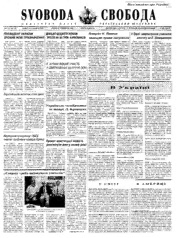
Svoboda-1995-180
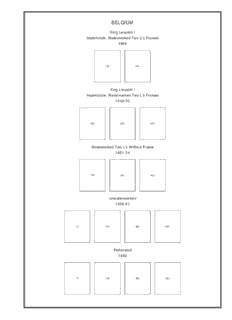
BELGIUM - Stamp Albums Web

DTIC ADA518756: Reforming Pentagon Decisionmaking
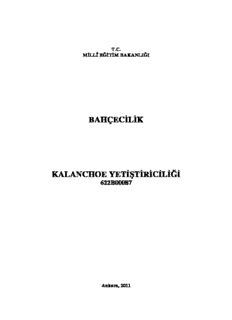
bahçecilik kalanchoe yetiştiriciliği
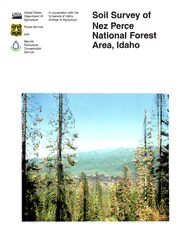
Soil Survey of Nez Perce National Forest Area, Idaho (2006)
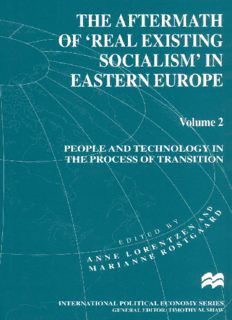
The Aftermath of ‘Real Existing Socialism’ in Eastern Europe: Volume 2: People and Technology in the Process of Transition

Sweat and Soap Vol. 3
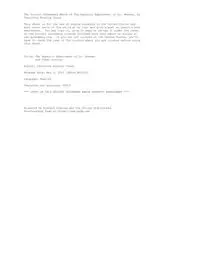
The Hypnotic Experiment of Dr Reeves by Charlotte Rosalys Jones
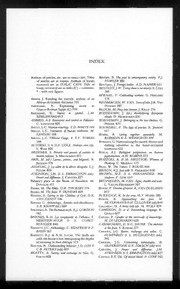
Man 1993: Vol 28 Index
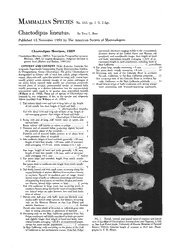
Chaetodipus lineatus
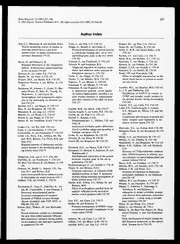
Developmental Brain Research 1993: Vol 74 Index
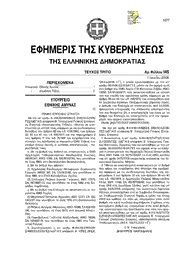
Greek Government Gazette: Part 3, 2006 no. 145
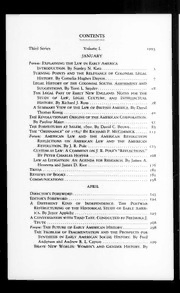
The William and Mary Quarterly 1993: Vol 50 Table of Contents
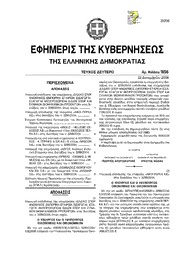
Greek Government Gazette: Part 2, 2006 no. 1856
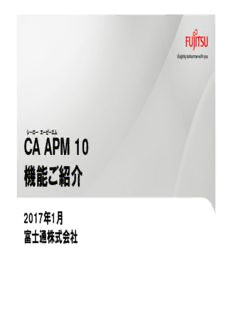
CA APM 10 機能紹介資料
